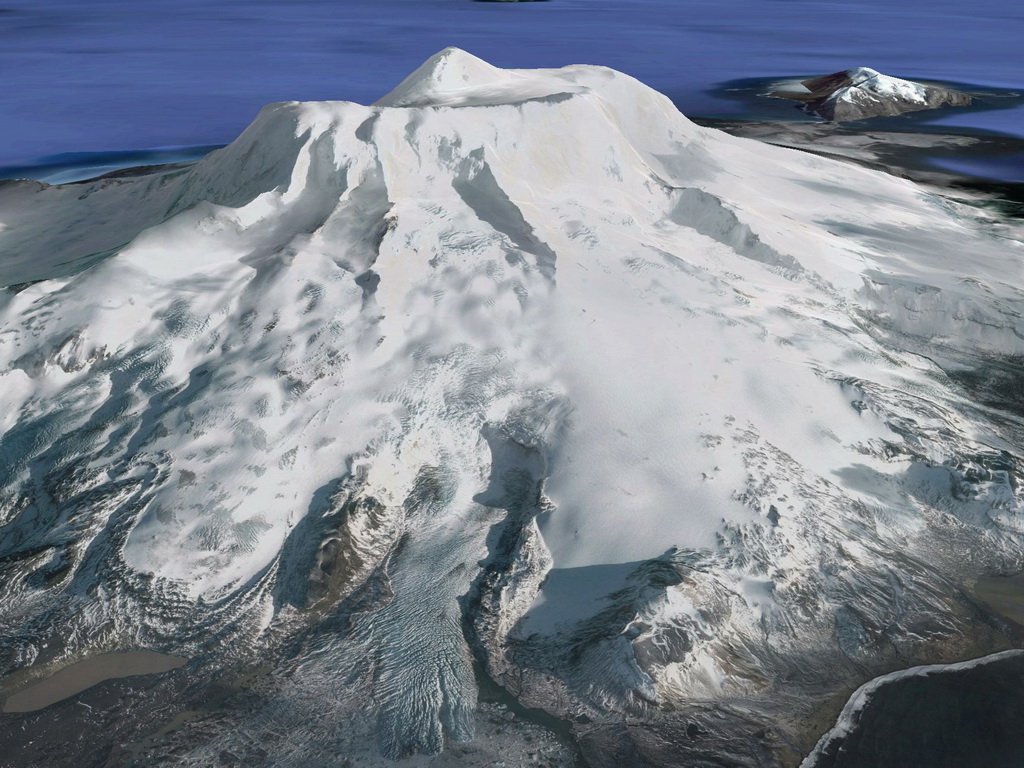

|
The Project: The Heard Island Project is centered on a multidisciplinary scientific expedition to Heard Island, Territory of Australia, in the Southern Ocean, during March/April, 2016. The Island: Heard Island is a large (20x30 km, 368 sq-km), subAntarctic island lying at 53°S, 73°E, nearly 1600 km from Antarctica and more than 3500 km from Africa, India, and Australia. It has a 2745 m active volcano (Big Ben), about a dozen fast-moving (and retreating) glaciers, large seasonal populations of seals, penguins, and seabirds, and extensive areas of mosses, grasses, and other plants.The island is a territory of Australia, managed by the Australian Antarctic Division (AAD), Hobart, Tasmania, under the Heard Island and McDonald Islands (HIMI) Marine Reserve Management Plan. Discovering Life in the Extremes: About 300 species of plants and animals have been recorded from the island. However, estimates indicate that several hundred more species, mostly in the size range 0.1-10 mm, remain to be discovered. These missing species are a significant component in the island's biodiversity; they are critical to our understanding of the structure and functioning of the ecosystem in this extreme environment.Two aspects of the biodiversity are compelling motivation for the expedition:
This fortuitous (and probably unique) combination on a very large and active island offers a remarkable opportunity to separate the effects of natural climate change from anthropogenic effects; that is, extension of the species list will enable more quantitative tests of the effects of global climate on polar regions. Thus, a primary motivation for the project is to take advantage of this opportunity to make a significant step forward in our ability to predict and manage the future of the Earth's biosphere.This is what we mean by Discovering Life int he Extremes. VKØEK: Heard Island is also well-known in the field of radio communications. It is one of a class of extremely isolated islands worldwide that are unoccupied and very seldom visited. Because of their isolation, these islands present a challenge and an opportunity to better understand radio communications from such complex and poorly described locations. One of the most sought-after activities is the temporary activation of such islands for making contacts with radio amateurs worldwide, and activity known as "DXing." Perhaps fifty thousand radio operators consider a contact with such islands a highlight of a lifetime of effort. In the case of Heard Island, the most recent radio operation was done in 1997. After nearly two decades, Heard Island has risen to be among the most-sought locations for a radio contact. During the time we are on the island, we will make contacts with as many amateur radio operators as possible, using the callsign VKØEK. Linking the Remote in Realtime: The relatively recent explosion of capabilities in social media, including dynamic websites, voice and video conferencing, and mobile communications, with such applications as Facebook, Twitter, and Google Groups, presents the opportunity for linking millions of people worldwide using a communications satellite, enabling data, images, and video to be shared in effectively real time. For this expedition, a corporate partner is providing terminals and airtime to enable the link between Heard Island and a central internet server that will transfer content of various kinds between the island and collaborators, classrooms, support personnel, and the public anywhere in the world. This is what we mean by Linking the Remote in Realtime. Goals: The opportunities in environmental science and communications (both amateur radio and realtime) motivate the 2016 Cordell Expedition to Heard Island. Thus, one of the major goals of the expedition is to discover and document the missing species in order to extend the known biodiversity of this extremely isolated, extremely severe ecosystem. The second major goal is to develop, deploy, and operate an innovative communications system to enable radio amatuers worldwide to make a confirmed contact with Heard Island, and to provide real-time links to the internet for safety, scientific collaboration, and public information. And the third major goal is to untilize the wide variety of social media accessible through the internet to link very remote sites such as Heard Island with interested persons in real time. Organization: The project is being organized by Cordell Expeditions, a private nonprofit scientific research organization located in Walnut Creek, California. Cordell Expeditions has a 35-year record of successful scientific expeditions to remote oceanic sites, with Dr. Robert Schmieder as Director, Organizer, and Expedition Leader. .Details about the organization are available at www.cordell.org. The website for this project is www.heardisland.org, and the blogsite is www.vk0ek.org. There is also presence on Facebook and Twitter. Background: The 2016 expedition follows the successful 1997 Heard Island Expedition organized and carried out by Cordell Expeditions. Some aspects of the present project are similar to that project, in particular the extent of planning and preparation, the emphasis on safety and security of the island and its resources, and the extent of documentation. Details about the 1997 expedition are available in the book VKØIR Heard Island, which can be downloaded from the Project website.Cordell Expeditions is coordinating with the AAD and other appropriate agencies to ensure that the proposed activities during the 2016 expedition conform to the requirements for visits to, and activities on, Heard Island. Further information: Please contact the Expedition Organizer/Leader. |